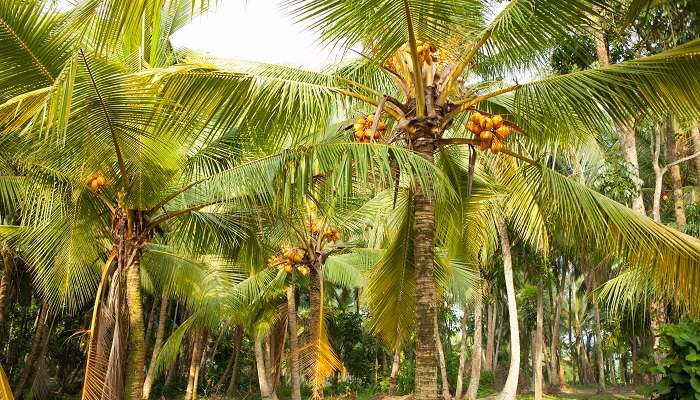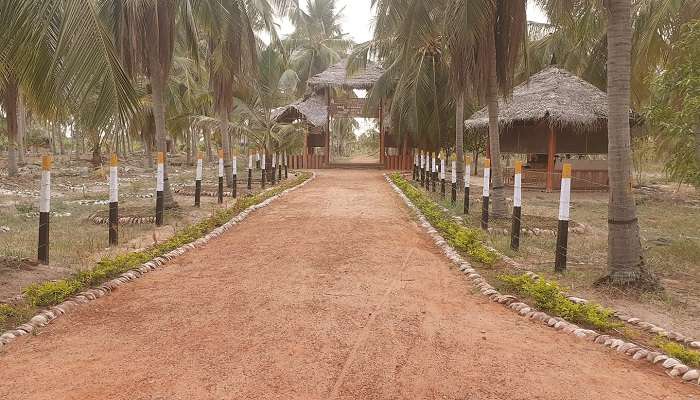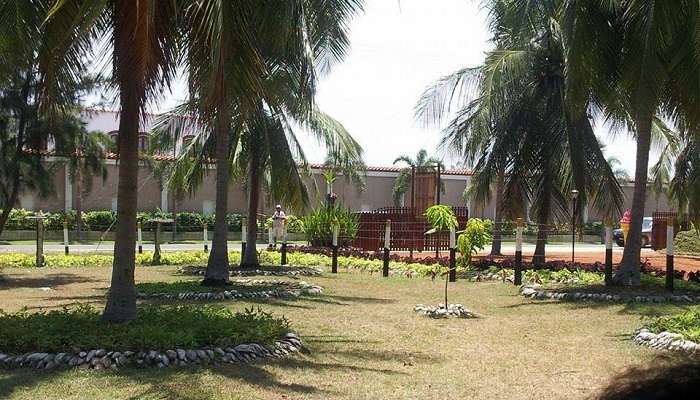Refresh Yourself The Coconut Cultural Park

The Coconut Cultural Park is a tourist favourite spot in Kalkudah, a coastal resort town. Located opposite the stunning Passikudah Beach, the park is a delight for anyone interested in knowing more about the tropical fruit. The park offers tours and detailed information about the production of coconuts, coconut plantations and the types of uses that coconuts see. It is managed by the Coconut Development Board, Sri Lanka, and demonstrates the usage of coconuts in items like oil, ropes and rugs.
History And Cultural Ties Of Coconut Cultural Park

Coconuts are of utmost importance to Sri Lanka, both economically and culturally. Sri Lanka is the fourth largest producer of coconuts in the world. The coconut originates in Sri Lanka during the reign of the Portuguese, the British and the Anuradhapura period. Its parts, such as its leaves, hold culinary and cultural value. Some consider the tender inner stem and the terminal bud called the palm cabbage a delicacy. The very young leaves are yellowish and shiny. The use of Gok leaves decorations has been referenced in the ancient literary work Kawsilumina, written during the Polonnaruwa period (1055–1232). Gok leaves are used for decoration on occasions such as wedding receptions, religious functions, and funerals.
In the Poruwa or wedding dais on which the bride and bridegroom stand while religious ceremonies are performed, tender Gok leaflets are used to beautify the structure. The Pirith mandapa or chamber in which the bhikkus chant pitch is also constructed using gok. Culturally speaking, Coconuts enjoy a prestigious position in Sri Lankan society and are interwoven with its people’s culture and traditions, with over 80% of annual production consumed domestically. Every part of the coconut palm is strongly combined with the community’s day-to-day life. Therefore it has been christened as Kapruka or ‘Tree of Life’ a source of plentiful resources.
Must Read: Places To Visit In Sri Lanka With Family
Things To Do At Coconut Cultural Park

- The cultural park offers a delightful journey into coconut palm’s rich heritage and versatility, a revered symbol of Sri Lanka’s natural bounty.As visitors walk under the beautiful coconut trees, they are compelled to think about the myriad uses of this versatile plant, from providing timber for housing and shelter to yielding coir rugs, rope, cooking oil, and the beloved local beverage, toddy.
- It offers a seamless blend of natural beauty, cultural heritage, and recreational activities, making it a must-visit destination for travellers seeking an authentic Sri Lankan experience. Tourists can explore the wonders of the coconut palm, enjoy bull cart rides, or savour the taste of tropical fruits.
- A trip to the cultural park wouldn’t be complete without sampling some of Sri Lanka’s delicious tropical fruits. Enjoy the crispness of fresh pineapple, the sweetness of ripe papaya, or the refreshing taste of pure coconut water right from the source.
- For visitors looking for a moment of peace amidst the surroundings, a ride on a bull cart offers the perfect respite. Climb aboard and let the rhythmic sway of the cart lull you into a state of tranquillity as you soak in the sights and sounds of the park.
- The park also talks about the diversity of other plants and their uses, such as the papaya, which finds its rightful place amidst the verdant landscape. Visitors are invited to learn about these plants’ cultivation, uses, and cultural significance, gaining insights into traditional practices and sustainable living
Essential Information You Need To Know Before Visiting

The park is open daily from 9:00 AM to 6:00 PM. To make the most of your visit and escape the midday heat, it’s best to arrive early. Since there is a lot of walking in the park, wear light, comfortable clothing and sturdy shoes for walking. As you will be spending a lot of time outside, it is advisable to pack sunscreen, sunglasses, and a hat. Especially if you’re visiting on a hot day, make sure to drink lots of water and stay hydrated. You can purchase drinks at some refreshment stands located throughout the park, however it is sensible to have a water bottle with you as well.
To get the most out of your trip, consider taking a guided tour. The tour leaders have extensive expertise and may offer captivating perspectives on the displays and events. Visitors are also suggested to plan their visit to not miss the traditional dance performance that happens every day, visit the souvenir shop, and get gifts for all their loved ones.
Further Read: Things To Do In Sri Lanka
Sri Lanka is home to many beautiful places, and among them, Coconut Cultural Park is a must-visit place. These were some of the most important things about the Coconut Cultural Park. Now that you know more, book your trip to Sri Lanka now and have the trip of a lifetime.
For our editorial codes of conduct and copyright disclaimer, please click here.
Cover Image Source: Shutterstock
Frequently Asked Questions About Coconut Cultural Park
What is the Coconut Cultural Park?
The Coconut Cultural Park is a unique cultural and ecological attraction in Sri Lanka. Located in a tropical setting, the park offers visitors an immersive experience of the world of coconuts, from their agricultural cultivation to their various uses in culinary, medicinal, and artisanal crafts.
What activities and experiences are available at the Coconut Cultural Park?
Visitors to the Coconut Cultural Park can engage in various activities and experiences. These include guided tours that provide insights into the history and cultivation of coconuts, hands-on workshops where guests can learn to make coconut-based products like oils, crafts, and foods, and interactive exhibits that demonstrate coconuts' traditional and modern uses. The garden features guided tours, interactive workshops, and beautifully landscaped areas filled with different varieties of coconut palms.
Are there any educational programs available for students and groups?
Yes, the Coconut Cultural Park offers a range of educational programs designed for students and groups. These programs are tailored to different age groups and educational levels, focusing on topics such as sustainable agriculture, the economic importance of coconuts, and environmental conservation.
How do I reach the Coconut Cultural Park?
The Coconut Cultural Park is accessible by various means of local transportation. Visitors can reach the park by car, with ample parking available on-site. Public transportation options, such as buses and shuttles, may also be available depending on the location. Detailed directions and transportation information can typically be found on the Park's official website or by contacting their visitor services for assistance.
What are the operating hours and admission fees for the Coconut Cultural Park?
The operating hours of the Coconut Cultural Park generally vary depending on the season and special events. Typically, the Park is open daily from morning until late afternoon, with extended hours on weekends and holidays. Admission fees vary, with discounts often available for children, seniors, and groups. It is recommended to check the Park's official website or contact their visitor services for the most up-to-date information on hours of operation and ticket prices.
People Also Read:
Pettah Floating Market In Sri Lanka Victoria Park In Sri Lanka Gregory Lake In Sri Lanka

Embrace the essence of surreal places around the world through perfect narratives with a touch of imagination. As a content writer, I weave my ideas and words together to create a vivid picture of alluring destinations. Embark on limitless adventures as you read thrilling travel stories.











